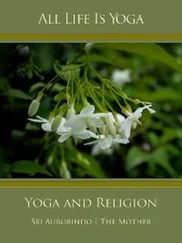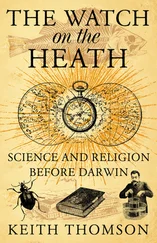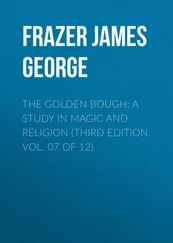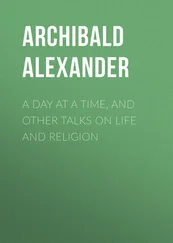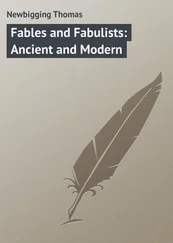Vikernes, Varg - Varg Vikernes - Sorcery and Religion in Ancient Scandinavia
Здесь есть возможность читать онлайн «Vikernes, Varg - Varg Vikernes - Sorcery and Religion in Ancient Scandinavia» весь текст электронной книги совершенно бесплатно (целиком полную версию без сокращений). В некоторых случаях можно слушать аудио, скачать через торрент в формате fb2 и присутствует краткое содержание. Жанр: Старинная литература, на английском языке. Описание произведения, (предисловие) а так же отзывы посетителей доступны на портале библиотеки ЛибКат.
- Название:Varg Vikernes - Sorcery and Religion in Ancient Scandinavia
- Автор:
- Жанр:
- Год:неизвестен
- ISBN:нет данных
- Рейтинг книги:3 / 5. Голосов: 1
-
Избранное:Добавить в избранное
- Отзывы:
-
Ваша оценка:
- 60
- 1
- 2
- 3
- 4
- 5
Varg Vikernes - Sorcery and Religion in Ancient Scandinavia: краткое содержание, описание и аннотация
Предлагаем к чтению аннотацию, описание, краткое содержание или предисловие (зависит от того, что написал сам автор книги «Varg Vikernes - Sorcery and Religion in Ancient Scandinavia»). Если вы не нашли необходимую информацию о книге — напишите в комментариях, мы постараемся отыскать её.
Varg Vikernes - Sorcery and Religion in Ancient Scandinavia — читать онлайн бесплатно полную книгу (весь текст) целиком
Ниже представлен текст книги, разбитый по страницам. Система сохранения места последней прочитанной страницы, позволяет с удобством читать онлайн бесплатно книгу «Varg Vikernes - Sorcery and Religion in Ancient Scandinavia», без необходимости каждый раз заново искать на чём Вы остановились. Поставьте закладку, и сможете в любой момент перейти на страницу, на которой закончили чтение.
Интервал:
Закладка:
4.7 Týr's second Group of eight
42
Sat there on the mound
and struck the harp
a sorceress-guardian
happy servant of eggs;
the cock crowed
in the forest of gallows,
beautiful red cock,
was called hider/concealer.
This verse is connected to Tíwaz and Týr. Sorceresses went to the mound to be in contact with the dead (kings) who lay there, and by doing so have the opportunity to give birth to them again. Although Völuspá is recorded in the mythic age, the verses stemmed from the Stone Age, when people still believed that the women became pregnant from contact with the fertile nature, and that the dead could be reborn by women who touched their remains. The verses were later circumscribed, but much of the contents remained relatively unchanged. The sorceresses sat on the mound, touched the remains of the deceased, and played and sang songs (spells) to give birth to the dead again.
43
Crowed by the spirits
the one with golden hair,
to awaken the folk
of the father of battle (Óðinn);
another crowed
beneath the Earth
a cock black as soot,
in the halls of Hel.
This verse is connected to Berko and Jörð. The beautiful sorceresses, with long blond hair, sang and raised the dead, and brought them back to life. Some stood outside the mound, some sat on top of the mound, while those who were to give birth to the dead were sitting inside, in the pitch black grave, because they had to physically touch their remains. This is how the dead got back their life-force and could begin the journey back to life, through the mother's/Earth's womb.
44
The swallower is barking loudly,
in front of the cave leaning over the hillside,
the ties/mounts are torn,
hardship is growing,
she knows that the flocks chants,
forwards I see, even further,
to the end and meaning of the powers,
the destiny of the victorious god.
This verse is connected to Ewaz and Máni. The dead rose from the grave because the sorceresses cast spells to revive them, to let them loose from the ties of the grave. They could begin the journey back to life, through the womb, and be born again. Because the dead had been awakened from their sleep Höðr, who had also been resting in the underworld, could come back, and he would again become Baldr's death.
45
Brothers will talk against each other
and become each other's bane
sister's sons will
waste their bonds,
the world is hard,
many judgements against crimes,
axe time, sword time,
shields will be broken,
wind time, wolf time,
before man's world will be turned up-side-down.
no man will
spare the lives of others.
This verse is connected to Mannz and Borre. It was foreseen that the brothers Baldr and Höðr would be each other's bane. Höðr would kill Baldr with the mistletoe and would himself be killed by his brother (Váli) because of this. The fight against the winter spirits, who had been released, would return. Bears and wolves would be chased and killed in the autumn darkness, before the winter; gods would fight against gods, in the coming Ragnarök, and the world was turned upside down. Man, the thinking man, Jarl's enlightened offspring, could predict this.
46
The sons of reminiscence play,
the destiny is fulfilled,
when the horn of sound
sounds
The world tree (Heimdallr) plays loudly
the horn is in the air,
the mind (Óðinn) talks
with the head of reminiscence.
47
The one who demands reverence (the world tree) trembles
ash standing
the old tree groans
a giant (Fenrir) is let loose,
everyone is afraid
to travel on the road to Hel,
before black
wants to swallow it.
This verse is connected to Laguz (46./45.) and Inguz (47./45.), Njörðr and Freyr. Everything that was predicted would happen, when the gods blew in their bronze lures and announced that Ragnarök had begun. Óðinn (the sorcerers) remembered the verses and the runes he had learned, when he placed his eye in the past (the burial mound). The wind howled in the winter night and Fenrir/Höðr was let loose, along with the other dead. Everyone was scared, when they travelled into the wilderness to fight the powers of death, in the darkest winter night; Freyr's killer.
48
What is happening to the spirits,
what is happening to the white ( i. e elves),
the whole world of giants is yelling and howling,
the spirits want peace at the assembly;
dwarves groan
in front of their stone doors,
knowing much about stone houses.
Do you still know enough or what?
This verse is connected to Dagaz and Baldr/Íðunn. The Sun is shining in the grave's innermost chamber, on the Winter Solstice, and awakens all the dead. The burial mounds have been opened and all the dead fare towards the battlefield. Baldr and his wife (the elves) will also visit the living in the Yuletide, and led by Heimdallr they bring with them gifts from the grave.
49
The swallower (Fenrir) barks loudly
in front of the cave leaning over the hillside,
the ties are torn,
hardship grows.
This verse is connected to Oþala and Ásgarðr. Those who died and were buried, including Baldr and his wife, are allowed to come home on a visit on the Yule eve.
4.8 Freyr's third Group of eight
50
The weak comes from the east,
pushes the source in front of him,
very powerful wand
with giant courage;
the worm moves,
eagle enjoys
to tear in corpses with rust-red (or pale) beak
the nailed vessel is loosened.
This verse is linked to Fehu , Uruz and Þursaz , Auðhumbla, Ymir and Bölþorn (Jörmungandr). The mistletoe is hung up in the Yuletide, and this is the dead Baldr and the – at this time – weak solar power, who has come to visit the living. The dead (who comes in shape of birds) enjoy the decorative food, (lifeless) cake men, cake wives, seeds and cake houses, which they consume with their pale beaks.
51
Keel comes from the east,
the world of fire arrives
destiny of the peoples
Loki steers;
witless powers fare about
with all strictness,
they are the brothers to
bee-shoes who travel across river.
This verse is connected to Ansuz and Óðinn. The fire shines from the torches, pieces of wood kindled by lightning, and saves Baldr and the world from the winter spirits. The berserks, who had hidden away their own life force (senses) elsewhere, fare forth in the Yuletide with hardship. They are the brothers of the gods and elves who have arrived flying (with bee-shoes) from the grave, across the river of forgetfulness.
52
Black fares forth from the south
with repeated attempts to destroy
the Sun shines from
the fallen/chosen god's sword;
stone mountains (-heaps) crumble,
malevolent spirits (trolls) fare to and from,
tread freely on the road to Hel,
the sky is cloven.
This verse is connected to Raiþo and Þórr. The darkness takes over the world when the Sun sets, but the initiated gods wield torches (like swords). Elves and trolls (i. e. benevolent and malevolent spirits), summer and winter spirits, ascend freely from the underworld. The gods cast sparks into the air; flaming arrows and spears are cast through the air, burning wheels travel down hillsides and sparks spray from fires when the gods strike them with sticks and torches.
53
Then comes the maple's (Frigg's)
second grief;
when Óðinn charges
to fight the wolf,
and the bane of the baler (Freyr),
Читать дальшеИнтервал:
Закладка:
Похожие книги на «Varg Vikernes - Sorcery and Religion in Ancient Scandinavia»
Представляем Вашему вниманию похожие книги на «Varg Vikernes - Sorcery and Religion in Ancient Scandinavia» списком для выбора. Мы отобрали схожую по названию и смыслу литературу в надежде предоставить читателям больше вариантов отыскать новые, интересные, ещё непрочитанные произведения.
Обсуждение, отзывы о книге «Varg Vikernes - Sorcery and Religion in Ancient Scandinavia» и просто собственные мнения читателей. Оставьте ваши комментарии, напишите, что Вы думаете о произведении, его смысле или главных героях. Укажите что конкретно понравилось, а что нет, и почему Вы так считаете.

